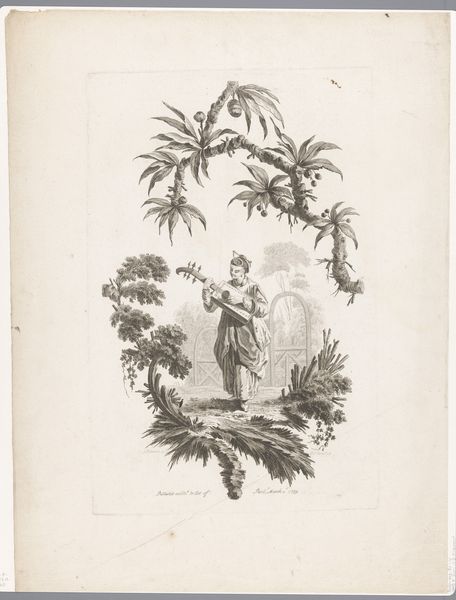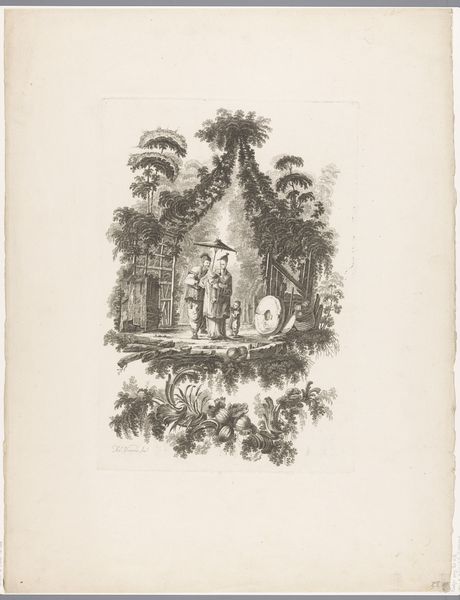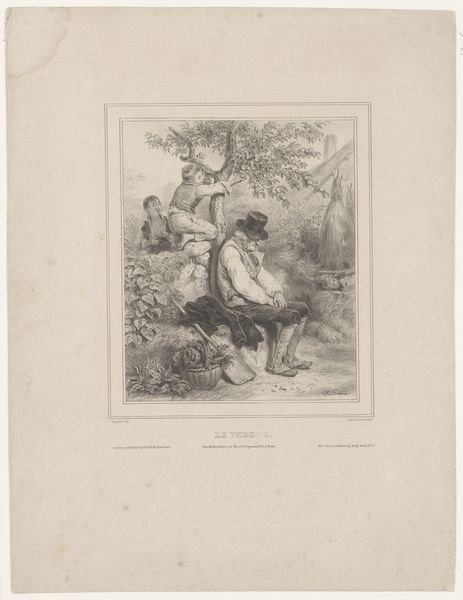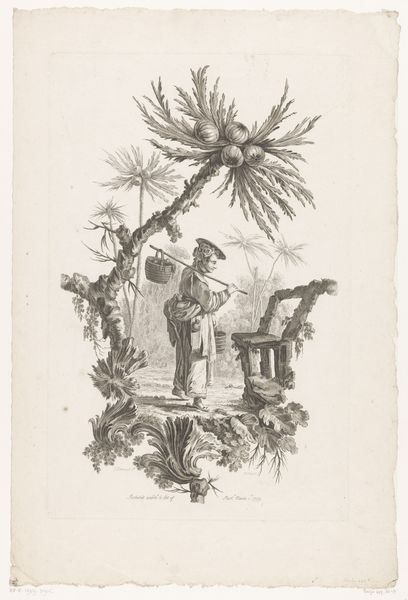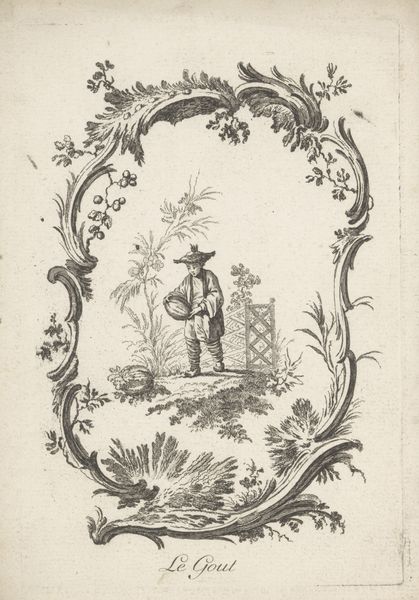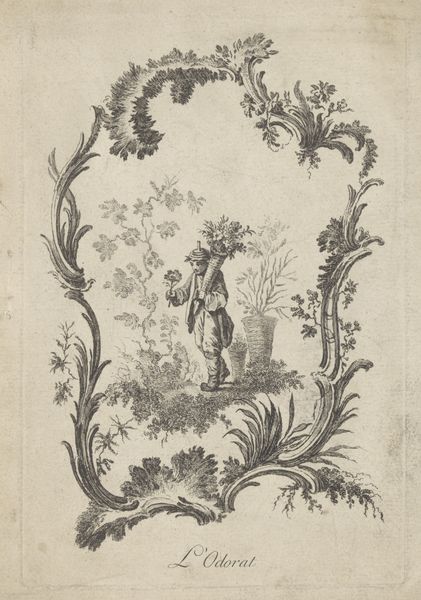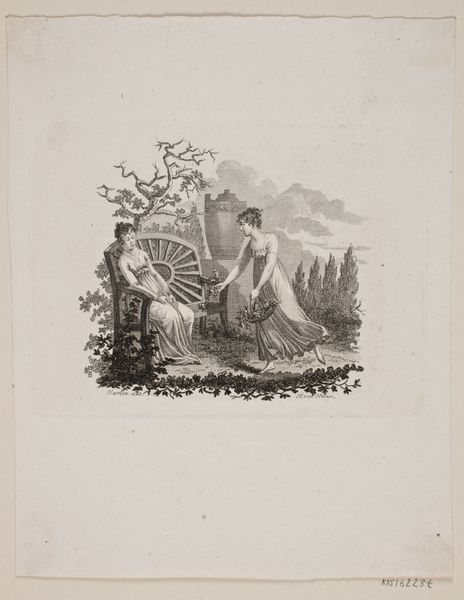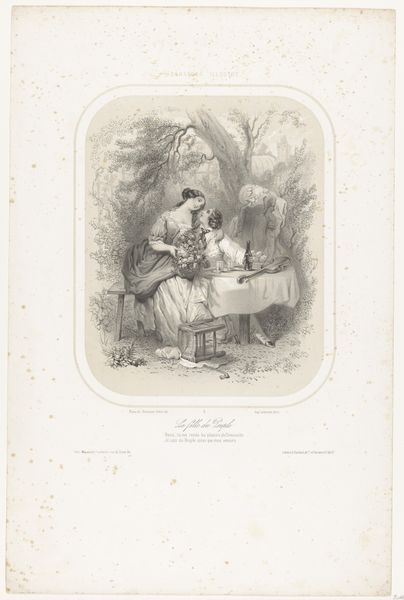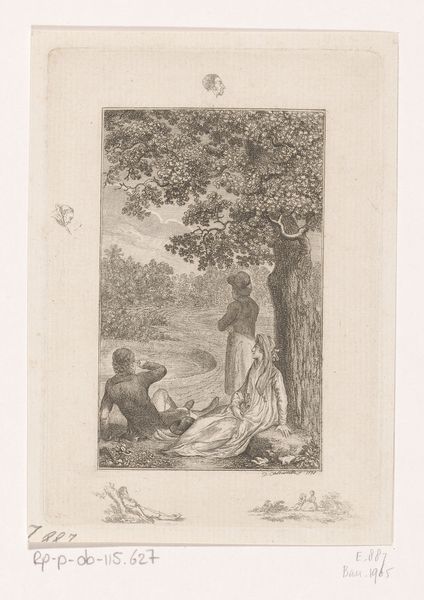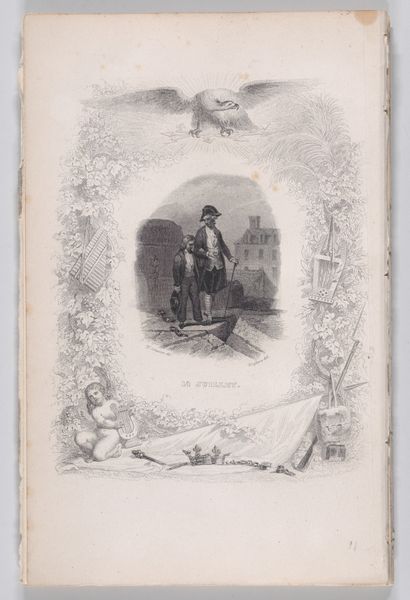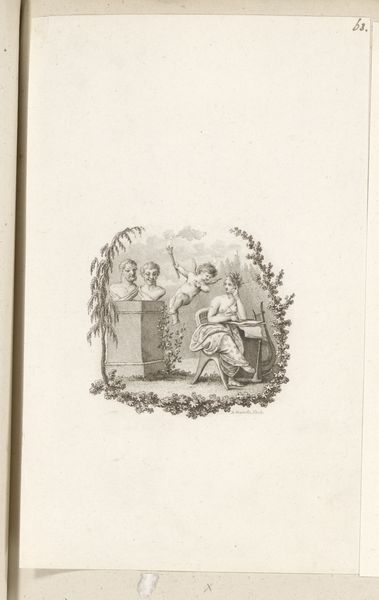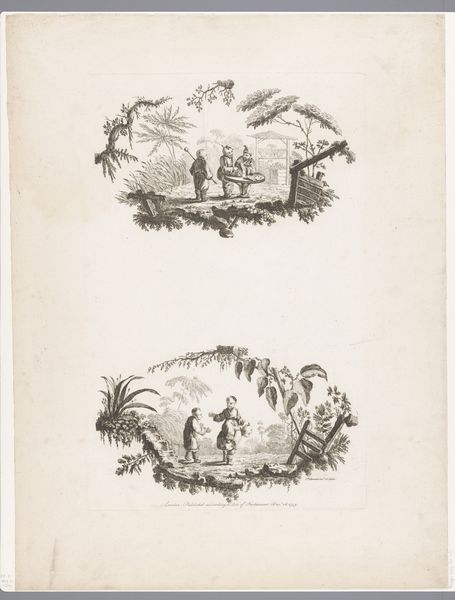
print, engraving
#
portrait
# print
#
asian-art
#
landscape
#
bird
#
figuration
#
engraving
#
rococo
Dimensions: height 429 mm, width 276 mm
Copyright: Rijks Museum: Open Domain
Curator: Look at this piece; "Vrouw met valk" (Woman with a Falcon), possibly from 1759, etched by Pierre Charles Canot. The Rococo influence is unmistakable. Editor: My first thought? A fragile beauty. It’s intricate, almost ephemeral, with that muted grayscale palette. The composition feels both enclosed and expansive at once. Curator: Absolutely. And this brings up an important consideration, this engagement with chinoiserie reveals complex colonial attitudes prevalent at the time. The idealized, decorative appropriation flattens the richness of Asian cultures into easily consumable aesthetics. Editor: Right. And think about the engraving process itself. The artist is impressing this scene, this representation, onto the copper plate, essentially controlling and fixing an image of the "exotic" for mass consumption. This aligns perfectly with how prints enabled the dispersal of new images to patrons that fueled imperial ideologies and tastes. Curator: Precisely! The woman with the falcon is literally framed—encapsulated—within Western artistic conventions and power dynamics. What does it mean that this scene is not observed but essentially staged? It highlights questions around authenticity, cultural performance, and who has the right to represent whom. Editor: Furthermore, this act of engraving can also be tied to craft traditions versus 'high art'. While Canot signed his name, and while this will be perceived and consumed by wealthy collectors, we need to consider all those invisible laborers involved in copper production or preparing inks during print production and their skills which are rarely seen, rarely lauded. Curator: A great point. It’s essential that we expand these narratives and confront these uncomfortable historical realities rather than simply admiring its decorative appeal, its form. We can no longer allow history to be silent in matters of inequity, even when dealing with aesthetic experiences. Editor: It has transformed my initial perception. It compels a more informed analysis that unearths both the artistic vision and the processes—human, cultural, material— that came together to manifest and disseminate such work within that precise historical frame.
Comments
No comments
Be the first to comment and join the conversation on the ultimate creative platform.
